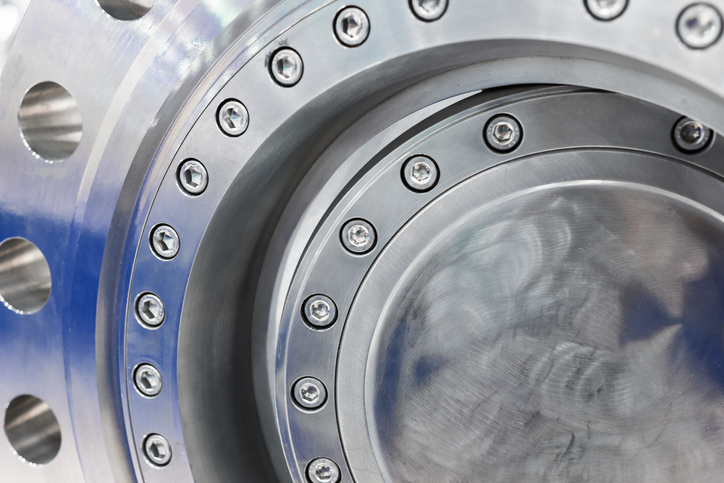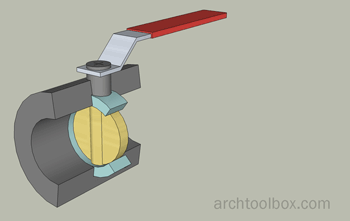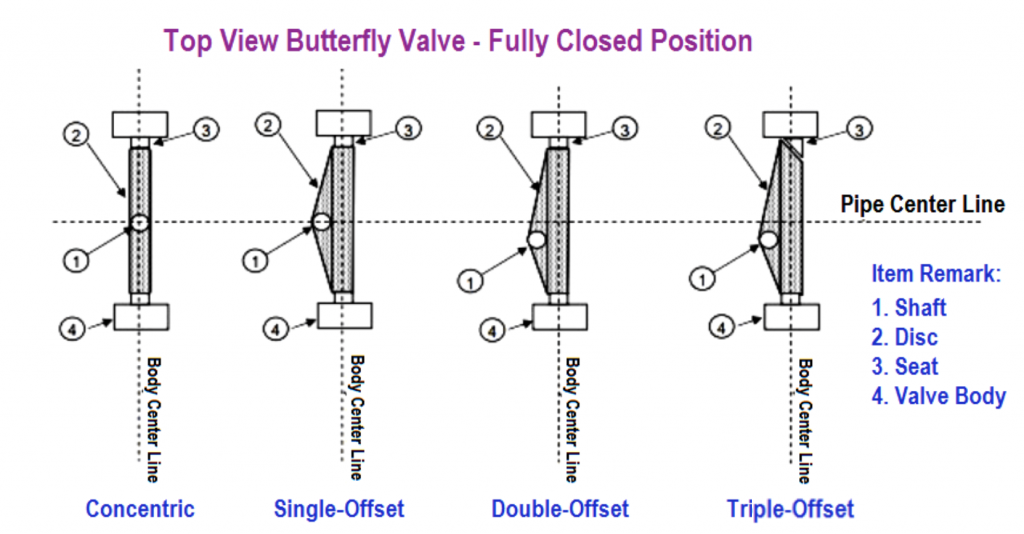Types of Butterfly Valves

The types of butterfly valves vary according to material attributes and product configuration. However, all types see frequent use in applications that require on/off flow modulation. They are effective for low-pressure and temperature applications where the wetted part directly contacts the fluid while in an open position. Butterfly valves receive their name from the metal disc which rotates from perpendicular to the flow path (closed) to parallel to the flow path (open).

Types of butterfly valves can be categorized by the following attributes: material of construction, configuration, mounting type, and actuation type.
Materials of Construction

Bodies of a butterfly valve are most commonly carbon steel. Carbon steel provides a relatively low cost and acceptable performance in most applications. More demanding applications require stainless steel. Exotic materials such as titanium may be specified for seawater applications due to titanium’s extremely high corrosion resistance.
Valve seats typically fashion from three different materials: rubber-lined, plastic-lined, and metal. Rubber-lined is the standard seat and is appropriate for non-demanding, non-abrasive, low-temperature applications. Plastic seats work well with chemicals, abrasive applications, or where sanitation and purity are a great concern. Metal seats are the most expensive and are a good fit for high-pressure or high-temperature applications.
Configuration
The configuration pertains to how the disc closes and engages with the valve seal. There are four disc configurations: concentric, single offset, double offset, or triple offset.

The simplest design of a butterfly valve is concentric. The stem centers in the middle of the valve disc and the middle of the pipe bore. The disc may contact the seat as early as 85° degrees of the way through the 0°-90° turn.
Single-offset butterfly valves possess a stem located behind the disc. The offset of the stem causes later contact of the disc via the closing motion. This design provides less seat contact, thus enabling longer seat life. Single-offset valves are rare as enhanced functionality at no additional cost is provided in the double-offset design.
Double-offset butterfly valves have a disc with two offsets. Like the single-offset version, the double-offset butterfly valve has a stem that is located behind the disc. The double-offset geometry enables contact for only 1° to 3° of the 90° rotation. Double-offset valves fit in higher pressure applications and when disc-seat contact is of concern.
The triple-offset butterfly valves feature a stem located behind the disc and offset to a side. The third offset refers to the geometry of the disc. The disc has a cone shape that allows seating with minimal contact between surfaces during the closing process. Triple offset valves are more expensive and are usually only seen in more demanding applications. As a result, these valves typically fashion from stainless steel, super duplex, or other specialized material.
Mounting Types of Butterfly Valves
Butterfly valves connect in four different types of ways to the surrounding pipe: wafer, semi-lug, lug, and double-flanged.

Wafer butterfly valves usually have two or four holes to secure and align the valve to the pipeline. They seat in the pipeline very securely because they go through the mounting flange on both sides. However, maintenance is difficult on wafer valves as they require a full system shut-down to service.
Lug-style butterfly valves have additional connections for attachment lugs. Flanges on one side of the valve will attach to half the lugs and the flange on the other side of the valve will connect to the other half. Lug valves can be easily removed, cleaned, and maintained. However, due to the lug connection method, the valve cannot handle as high pressures as its wafer counterpart.
Two infrequently used types of valves are semi-lug and double-flanged connections. The semi-lug valve works well in end-of-line service due to its quick and easy installation. The double-flanged valve allows visual inspection of both sides to validate the snugness of the connection.
Actuation Methods
The three ways to open and close a butterfly valve are: manually, via a gearbox, or via a pneumatic/electrical actuator.
In a strict manual actuation, a quarter-turn of a lever will bring the valve from fully open to fully closed and vice versa. The gearbox reduces the amount of torque required to close the valves, but it will take longer to close the valve. Pneumatic or electrical actuators provide large opening torque and are used for demanding and/or remote applications where manual and gearbox controls are not practical.
Applications
Butterfly valves see common use in hydro-electric power stations, pneumatic systems, and a variety of process industries. These process applications may include vacuum service, slurry transport, cooling water, and other gas services. Butterfly valves operate quickly and with a low-pressure drop. They typically require less space than ball valves and other shut-off valves.
Butterfly valves have poor throttling capabilities. Thus, handling by an inexperienced operator may cause cavitation and choked flow.
Maintenance and Repair Considerations
Butterfly valves require minimum maintenance. Geared units are intrinsically lubricated and designed to be maintenance-free. The valve should be opened and closed every six months after active use.
As with any mechanical item under service, routine visual inspections will ensure the valve operates as designed. The visual inspection should include not only the valve, but associated bolts, piping, and wiring. In the instance of a leaking valve, maintenance may be possible in the field, depending on the manufacturer’s requirements. The valve seat can usually be replaced by removing the stem and disc and reinstalling per the vendor’s recommendations.


